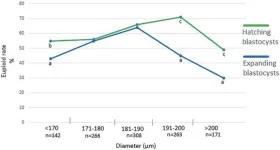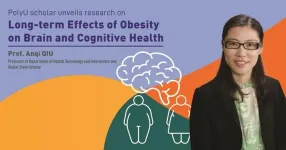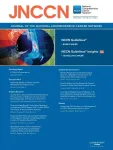Acute respiratory distress syndrome (ARDS) continues to be a tough nut to crack in critical care, taking lives despite years of research and better ventilator strategies. It is defined by acute hypoxemia, bilateral infiltrates on chest imaging, and non-cardiogenic pulmonary edema, and it remains a heterogeneous condition with mortality rates stubbornly close to 40%. Its complexity—spanning diverse etiologies, inflammatory profiles, and therapeutic responses—demands innovative solutions beyond traditional paradigms. In recent years, artificial intelligence (AI) has started making waves in medicine, and one standout is DeepSeek, an advanced large language model (LLM), employs deep learning techniques like transformer architectures to efficiently process and generate human-like text fast and efficiently. Compared to other LLMs, it boasts superior computational efficiency—delivering faster inference and requiring fewer resources—making it ideal for real-time clinical applications and cost-effective deployment. In medicine, DeepSeek’s precision and adaptability have shown promise, particularly for tackling complex and life-threatening conditions in emergency and critical care setting, such as cardiac arrest and ARDS. This editorial explores how DeepSeek could illuminate these dark corners of ARDS management, urging the thoracic and critical care communities to embrace and evaluate its promise. This paper will explore the topic from several aspects, including diagnosis, classification, precision ventilation, immune-modulating therapies, prognosis, and the road ahead.
Diagnosis: seeing beyond the new global definition
Early and accurate diagnosis is the key of ARDS management, yet delays are common. The Berlin criteria—partial pressure of oxygen (PaO2)/fraction of inspired oxygen (FiO2) ≤300 mmHg, acute onset, and radiographic infiltrates—miss subtle or evolving cases, particularly in resource-limited settings where imaging or arterial blood gas analysis is delayed. Human interpretation of chest X-rays, too, is fallible, with inter-observer variability muddying the waters. To fix these holes, a New Global Definition expands the diagnostic framework, incorporating high-flow nasal oxygen (HFNO) use, oxygen saturation (SpO2)/FiO2 ratios (≤315 when SpO2 ≤97%) as an alternative to PaO2/FiO2, and lung ultrasound as a viable imaging modality alongside X-rays or computed tomography (CT) scans, making it work better worldwide.
DeepSeek could totally shake up this diagnostic landscape. By integrating electronic health record (EHR) data, imaging, and biomarkers [e.g., interleukin 6 (IL-6), surfactant protein-D], it might detect ARDS signatures earlier and with greater precision, building on large-scale models that predict ARDS up to 48 hours in advance using similar clinical inputs. Convolutional neural networks (CNNs) integrated with DeepSeek could analyze chest X-rays or CT scans, identifying infiltrates with sensitivity surpassing radiologists—a feat demonstrated by other AI models in pneumonia detection. Natural language processing could mine unstructured clinical notes for contextual clues (e.g., sepsis onset), while predictive algorithms assign risk scores, flagging patients for closer monitoring or preemptive intervention, as seen in multi-center studies predicting ARDS onset within 24 hours. Picture a tool at the bedside buzzing an alert hours before a patient’s oxygen tanks—that’d be huge for critical care. Retrospective studies validating DeepSeek against gold-standard diagnoses could pave the way, though prospective trials remain the gold standard for clinical adoption.
Classification: decoding ARDS heterogeneity
ARDS is a heterogeneous syndrome with varying underlying causes and clinical presentations, complicating uniform treatment approaches. Phenotyping, which involves categorizing patients based on specific characteristics, has gained attention as a way to improve personalized treatment strategies, as highlighted in comprehensive reviews of ARDS management. Two subphenotypes—hypo-inflammatory and hyper-inflammatory—emerged from latent class analyses of trials like the Hydroxymethylglutaryl-CoA reductase inhibition with simvastatin in Acute lung injury to Reduce Pulmonary dysfunction-2 (HARP-2), distinguished by biomarkers [e.g., IL-8, tumour necrosis factor-alpha (TNF-α)] and divergent outcomes. Yet, translating this into practice is stymied by the complexity of real-time profiling and the absence of bedside tools, a challenge underscored by large-scale validation studies showing consistent phenotypic differences across thousands of patients. Misclassification risks mistargeted therapy, with hyper-inflammatory patients potentially benefiting from immunosuppression—such as simvastatin in HARP-2—while hypo-inflammatory ones languish without tailored intervention.
DeepSeek can leverage its advanced data analytics to identify distinct ARDS phenotypes based on a wide range of variables, including genetic markers, inflammatory profiles, and clinical outcomes. Through unsupervised learning, it might cluster patients into refined subphenotypes, integrating multi-omics data (genomics, proteomics) with clinical variables (e.g., oxygenation trends, ventilator settings). It could go beyond just splitting things into hypo- or hyper-inflammatory camps, maybe spotting new types, like a group prone to lung scarring or one that perks up with cilastatin, steering treatments with a level of detail we haven’t seen before. Such precision echoes successes in oncology, where AI-driven phenotyping has optimized chemotherapy, as demonstrated by machine learning models tailoring treatments in breast cancer and leukemia with improved survival rate. For ARDS, picture this: steroids for one bunch, ulinastatin for another, thymosin to juice up immunity in a third, or maybe nothing at all for some, all based on DeepSeek’s real-time insights. Validation against existing cohorts, such as the LUNG SAFE study (1), is a logical next step, with randomized trials testing phenotype-guided interventions as the ultimate proof.
Precision ventilation: tailoring the breath
Mechanical ventilation is a cornerstone of ARDS treatment, with lung-protective strategies being widely recommended. However, the optimal ventilatory settings, such as tidal volume, positive end-expiratory pressure (PEEP), and inspiratory pressure, are not the same for everyone. This one-size-fits-all approach ignores individual lung mechanics. High PEEP can help patients with recruitable lungs but may harm those with low compliance, and while driving pressure is tied to mortality, it’s rarely optimized in real time.
DeepSeek could personalize this critical intervention. By synthesizing ventilator data (PEEP, tidal volume, driving pressure) with patient-specific inputs (lung compliance, oxygenation index), it might recommend bespoke settings via reinforcement learning—a method proven in simulated ventilation optimization. Imagine a dashboard that adjusts PEEP dynamically as lung recruitability shifts, or predicting barotrauma risk before it happens. That kind of tailoring could cut down the days folks need a machine to breathe, which is a big deal in ARDS. Early evidence from AI-guided ventilation suggests reduced mechanical power delivery, a surrogate for lung injury. Clinical trials pitting DeepSeek-driven strategies against ARDS Network protocols could quantify its impact, potentially rewriting ventilatory guidelines.
Immune-modulating therapies: precision in the inflammatory storm
ARDS sets off an inflammatory storm that’s tough to tame, and while immune-modulating drugs show flickers of hope, their results are all over the map because every patient’s different. Corticosteroids, such as dexamethasone, reduce mortality in some trials (e.g., DEXA-ARDS) but falter in others, reflecting variable inflammatory profiles. Sivelestat, a neutrophil elastase inhibitor, shows preclinical potential in curbing lung injury but lacks robust human evidence. Ulinastatin, a protease inhibitor, improves oxygenation and survival in meta-analyses of Chinese ARDS cohorts, though Western validation remains limited. Thymosin, an immunostimulant like thymosin alpha-1, enhances immune function in hypo-inflammatory states. A recent look at sepsis patients showed it didn’t budge the 28-day death rate overall, but it might help folks over 60 years or those with chronic diseases. Future research should focus on these specific populations to further clarify the therapeutic effects of thymosin alpha-1. The challenge lies in identifying which patients benefit—and when.
DeepSeek could transform the approach to immune modulation in ARDS by leveraging real-time data analysis. By assessing biomarkers (e.g., IL-6, TNF-α), inflammatory trajectories, and clinical responses, it could precisely identify which patients might benefit from specific therapies. For instance, it could flag hyperinflammatory patients for corticosteroids or ulinastatin, pinpoint hypo-inflammatory cases for thymosin to boost immunity, or spare others from ineffective treatments, thereby optimizing therapeutic outcomes. Randomized trials comparing these tailored predictions to standard care could validate their effectiveness, potentially establishing a new paradigm for ARDS management.
Prognosis: foreseeing mortality and disability
ARDS’s high mortality and debilitating sequelae among survivors underscore the need for accurate prognosis prediction to guide care and resource allocation. Traditional scoring systems falter in capturing ARDS’s dynamic course, while disability—ranging from physical impairment to cognitive decline—remains poorly forecasted. Large-scale studies show mortality linked to factors like driving pressure and inflammatory markers, yet integrating these into real-time predictions remains elusive.
DeepSeek could illuminate this prognostic fog. Leveraging its computational prowess, it might integrate multi-modal data—EHRs, ventilator parameters (e.g., tidal volume, PEEP), and biomarkers—to predict mortality with precision rivaling. A mortality prediction model for ARDS constructed based on the random forest algorithm was compared with existing scoring systems based on logistic regression. The study found that machine learning significantly improved the performance of predicting ARDS mortality compared with existing scoring systems. Beyond mortality, DeepSeek could forecast disability by analyzing longitudinal trends (e.g., oxygenation recovery, sedation duration), offering a novel tool to stratify survivor outcomes, a gap unfilled by static scores. Validation against cohorts like LUNG SAFE could refine its accuracy, while prospective trials might test its ability to inform palliative care or rehabilitation planning. Such foresight could transform ARDS management, aligning interventions with predicted trajectories and optimizing both survival and quality of life.
The road ahead: promise and peril
DeepSeek’s possibilities are thrilling, but it’s not all smooth sailing. The old saying “Garbage in, garbage out” holds true—if the data’s messy, the results will be too, so we need tight integration with medical records and consistent info fed in. Interpretability, a perennial AI challenge, is critical in critical care; clinicians must trust the “black box” to adopt it. Workflow integration, too, requires seamless bedside deployment, avoiding the fate of clunky tech graveyard relics. Ethically, bias in training data could skew predictions, disproportionately affecting underserved populations—a pitfall seen in prior AI missteps.
Yet the promise outweighs the peril. DeepSeek could reduce diagnostic lag, refine therapy, and lower ARDS’s grim toll, aligning with the goal of improving people’s health and well-being as outlined in the Healthy China 2030 initiative. The medical community must champion its evaluation—starting with observational studies, progressing to trials, and culminating in real-world implementation. Collaboration between clinicians, data scientists, and industry will be key, as will funding to bridge bench and bedside.
Conclusions
DeepSeek, with its advanced AI capabilities, holds significant potential in transforming the management of ARDS. By enhancing diagnosis, decoding heterogeneity, optimizing ventilation, and personalizing immune modulation, it could usher in an era of precision ARDS management. As we stand at this crossroads, the question is not whether AI will transform medicine, but how swiftly we will harness it. DeepSeek beckons—let us answer the call.
END






